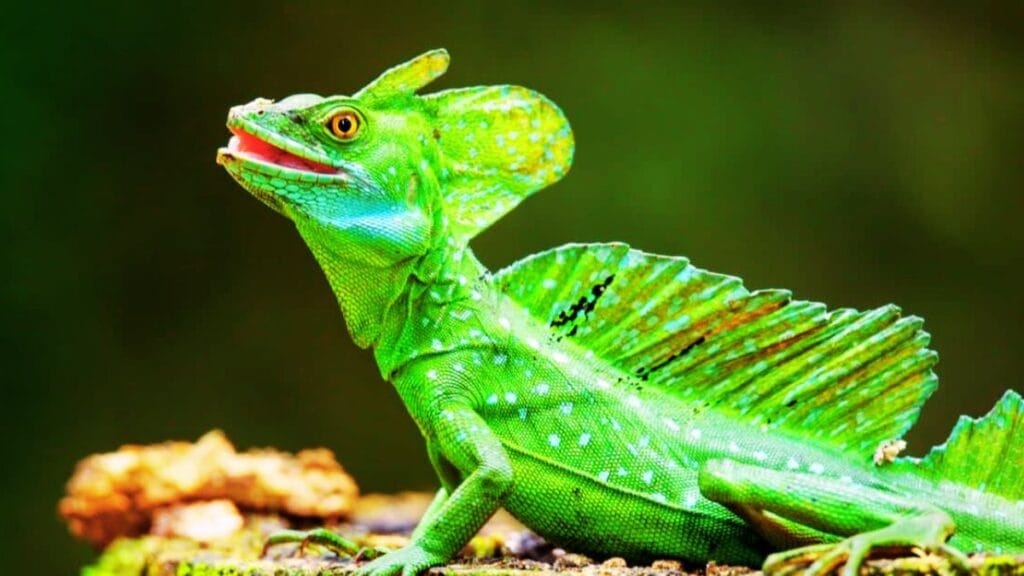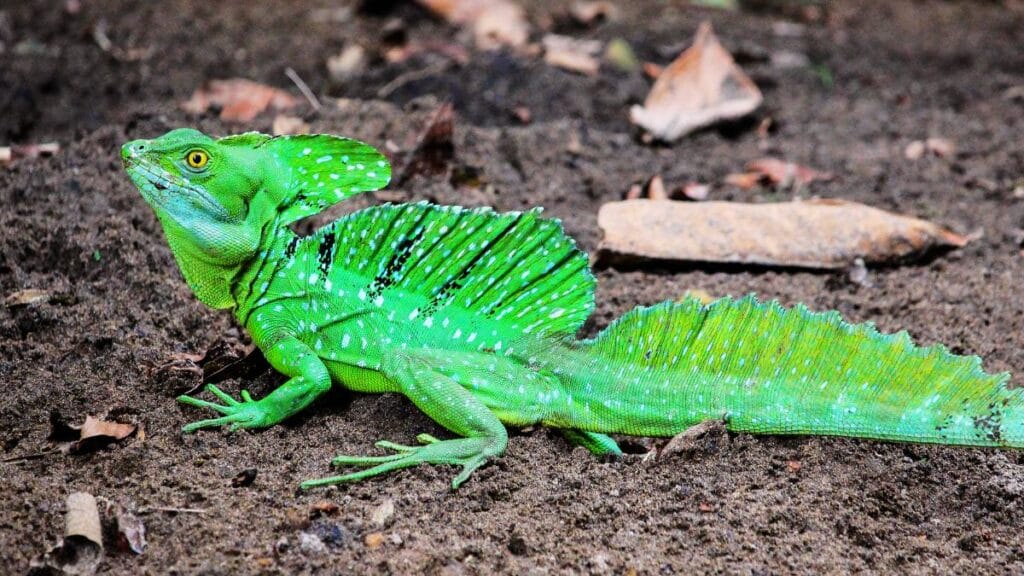Popularly known as Jesus Christ Lizards, Common Basilisks are medium-sized lizards that are endemic to Central and South America.

Many exotic pet lovers nowadays show interest in these lizards over the internet to keep them as pets.
But Jesus lizards or Basilisks are wild lizards and have a little bit of difficulty adjusting to home environments.
However, many of you have questions about whether proper preparation and training can help you to keep Jesus Christ Lizards or Basilisk lizards as pets. Let’s find out:
Are Basilisks or Jesus Christ Lizards Suitable As Pets?
Habitats:
Basilisks or Jesus lizards are found primarily in the rainforests of Central America and Northwestern South America. These lizards usually live in low elevations (sea level to 600m).
However, in some places, such as Costa Rica, Jesus lizards are found at 1200 m or 3900 ft height. Panama, Nicaragua, Venezuela, Colombia, and Brazil are their native places.
Size:
Basilisks are differentiated from other similar reptiles in the region by their relatively larger bodies and high-fin-like crests along their back.
Most basilisks are olive to brown or cream, and males have high crests on the heads and tails. Adults can grow up to 76-80 cm in length (including tails) and males weigh around 300-450 grams. Females weigh half of males weight.
Basilisks often have a long tail that comprises almost 70-80% of their total length. On Average, the tail is 50-60 cm long. Jesus lizards have a large mouth with saw-like sharp teeth on the inner side of the jaw.
Poisonous:
Jesus Christ lizards are not poisonous or don’t pose any direct threat to humans or other pets. However, if they are not treated well or threatened, they might bite which is very painful.
Common Basilisks are not aggressive by nature. Still, cautiousness must be maintained while interacting with them.
Diet:
Jesus lizards have an omnivorous diet. Despite being omnivorous, they preferred to consume insects more. Beetles, dragonflies, and small invertebrates such as small snakes, birds, eggs, and fish are their favourite diet.
However, in the absence of insects, Basilisks are also capable of consuming herbivorous diets. Foods like flowers, seeds, fruits, and grains are also their favourites.
Video Credit: how.on.earth.official (Basilisks or Jesus Christ lizards running on the water).
Predators:
Common Basilisks have numerous numbers of predators, such as large birds, snakes, fish, reptiles, and big mammals.
Physical Activities:
Jesus Christ lizards or Basilisks are known for walking or running in the water for a short distance. When fleeing from predators, these lizards gain enough momentum to run across the water while keeping their bodies out of the water.
Thus, Basilisks can run around 10–20 m (33–66 ft) without sinking. On water, the lizards can run at a speed of 24.1 km/h (15 mph), which is a little slower than their speed on land.
Apart from running, Jesus lizards are excellent swimmers and climbers. They can remain in underwear for more than 30 minutes.
Defensive Strategy:
They conceal under the leaves on the forest floor and hide motionlessly for a long time while avoiding predators. Their ability to run across water helps them avoid ferocious predators.
When they cannot run on the water, Jesus lizards use their swimming abilities to continue underwater for a long time, until the predators leave the area.

Lifespan:
In the wild, Jesus Christ lizards or common Basilisks live 2-3 years due to the threat of predators. However, in captivity, their lifespan increases to 7 years.
Also Read: Savannah Monitor Lizards: 7 Facts You Must Know Before Keeping Them As Pets
Other Important Aspects:
Common Basilisks or Jesus lizards can be good pets with proper training and care but definitely not recommended to first-time or inexperienced owners.
Basilisks are primarily wild animals and they require their natural habitat and environments to thrive. Recreating their natural habitats at your home can be very expensive and their maintenance charge can be skyrocketed as well.
A tall and large glass tank will be required to keep them as pets. As these lizards are semiaquatic animals and also climb trees, you need to set up a pool and branches of trees or plants inside the enclosure.
Additionally, 60-80% humidity with 76-80 degrees Fahrenheit temperature will be required inside the cage. Low-watt UVB bulbs and vitamin D and calcium supplements are also necessary for these lizards to keep their bones strong.
Cleaning the enclosure daily to prevent infections, and changing substrates every two weeks can be very hectic for you.
Jesus Christ lizards require daily exercise to prevent obesity. Their exercise may include climbing trees, running, and walking on the water. You may need a swimming pool at your home to help them practice running across the water.
Hence, Jesus lizards are not suitable pets for households either. If you are a professional reptile owner or in zoos you can think about keeping them as pets.
However, it is important to consider that these lizards are wild. They rarely breed in captivity. Hence most Jesus Christ (Basilisks) you find in the market are wild-caught and disease-prone.
Also Read: Caiman Lizards: Are They Suitable Pets For First-Time Owners?
Also Read: 9 Facts About Sailfin Lizards You Must Know Before You Pet Them
Also Read: Are Panther Chameleons Suitable Pets For Households?
Also Read: Chinese Crocodile Lizards: Are They Suitable Pets For Household?